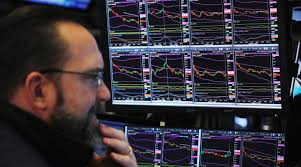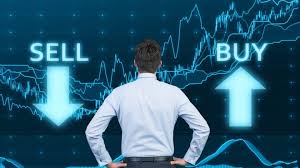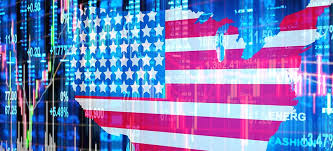Myth and Reality: Understanding the Hedge Fund Industry in One Article (1)
Help you understand what is hedge fund.

In the United States, hedge fund managers are often referred to as "hedgehogs". Maybe this is just a play on words, because hedge funds are similar to hedgehog. These "hedgehogs" are perhaps the most alert, sensitive, paranoid and least known group in the financial world.
The "roller coasters" do not need to be explained. I think the readers are all pioneers in the global financial market, or researchers and observers. They should also know the feeling of riding a roller coaster, and they should also know the similarities between roller coasters and roller coasters in the financial market. Place. Perhaps for a long time, we have hoped that hedge funds are just a hot but fleeting new thing in the financial market, so we can ignore it. Yes, these are indeed some exciting trendy gadgets, but there is no indication that they will become obsolete. The past few years have been perhaps the freest and most dynamic period in global financial history, and here we are. So, it's time to stop talking about hedge funds and figure out what they are.
Myth and reality
Not so long ago when people were talking about hedge funds, the common topic was nothing more than the unexpected wealth it brought: you might hear that a little-known guy bought a piece of art. for $ 80 million; Someone bought a site in Greenwich, Connecticut for $ 25 million, or someone paid them $ 1 billion in annual salary.
In a way, hedge funds are quite eye-catching, absurd, but quite entertaining competitions. Then the subject of hedge funds got serious. For example, have hedge funds artificially increased crude oil prices? A trader lost $ 6 billion due to a bad premonition in natural gas prices. Or think of the two small-scale market panics since 2007: are hedge funds the virus that caused the market to freeze? Or are hedge funds just a huge conspiracy trying to take over the world? Questions like this appear more and more in people's gossip. Although many people are still talking about these topics, they will soon lose their chat resources - because very few people really understand hedge funds. After George Soros became rich and adversarial, everyone seemed to want to try their luck with hedge funds. But people who really understand it don't always talk about it. And you will hardly ever see these fund managers again, as they either hide in their caves and enjoy their life, or they dive in Bora Bora in French Polynesia.
But now is the time to understand what a hedge fund is. It is estimated that in March 2007, US $ 2 trillion of funds were invested in hedge funds around the world, or 10 times that of 1999. Today, there are over 9,000 hedge fund investment institutions. , of which 351 institutions manage more than $ 1 billion in assets. Talents from traditional investment firms are transferred to hedge funds, as this area leaves plenty of room for them to display their talents. A recent study published jointly by fund advisory firms Casey, Quirk and the Bank of New York predicts that by 2010, assets controlled by hedge funds will be nearly three times the current amount. In 2006, the average lifespan of hedge funds was only 5.3 years.
What exactly is a hedge fund?
A hedge fund is only an investment vehicle, although it is less restrictive than most investment vehicles. Ordinary investing tools, such as batch-made mutual funds well known to ordinary people, can buy stocks and bonds for you, but nothing more. Most don't even allow “short selling”. Hedge funds can use all investment tools, including short selling, leverage, and derivatives such as options and futures. Years ago the "New York Times" began to cover the "weird and risky" trading tools used by hedge funds, which greatly increased the mystery of hedge funds. But what is ridiculous is that practically all financial institutions use these so-called “strange” tools. In fact, there is an easier way to define hedge funds, an industry elite said. Cliff Asness of AQR Capital believes: "Hedge funds are a method of collective investment, and their operation is less restricted. Relatively speaking, they are fundamentally unregulated, at least for the moment; the fees charged are quite high; so you want to get back They don't necessarily give you your money; and they usually don't tell you what they are doing. Investors expect them to make money all the time, but if the fund does not to do so, investors will immediately 'go to' another company that is making money recently. Institutions. Every three or four years, they will cause a catastrophe that is 'invisible for a century.'
Although the beginnings of hedge funds date back to Alfred Winslow Jones 1901 ~ 1989, American sociologist, writer, financial journalist and recognized "father of hedge funds" in the industry, the A.W Jones group founded in 1949 is generally regarded as the most old in the U.S. Hedge funds), but it was not until the late 1960s that hedge funds emerged and gradually evolved into a model widely known today: traders with high operational skills meet the needs investment from very wealthy clients who demand huge returns. These rich men are very willing to pay for Flip a "bet".
The first shining stars in the hedge fund world were people like Soros, Michael Steinhardt, and Bruce Kovner. They are all commodities and currency experts, able to take full advantage of the inefficient market. They raise capital through non-public channels, mostly friends and business partners, so they bypass most of the information disclosure requirements of US securities laws, i.e. that they don't need to explain to anyone how much money they have and are using it. What did the money do? To put it bluntly, the rich can fundraise from another group of the rich without supervision, as long as they promise to be discreet to the public, including not using any newspapers, magazines, or media. similar to communicate, or to use other things that may be considered public. The act of fundraising. In fact, there is no need for hedge funds to raise funds from the public. To participate in a hedge fund, you need to invest $ 2.5 million. It is best if the fund managers invest the money themselves. It is an informal mechanism of checks and balances designed to ensure that fund managers do not take unscrupulous risks.






